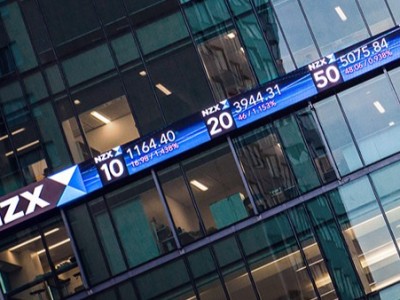Learn » Blog » Market commentary: What happened in April 2025
Market commentary: What happened in April 2025
Published on 08/05/2025
Topics:
investments

April 2025 was a challenging month for global financial markets, marked by sharp volatility and heightened uncertainty. Kiwi investors were left trying to make sense of a complex mix of geopolitical tensions, economic data surprises and shifting trade policy signals, while nervously watching their investment and KiwiSaver balances drop.
Global tensions and political pressure
Ongoing trade disputes between the United States and China, and between the European Union and the United Kingdom, contributed to an unpredictable investment environment. These tensions were compounded by continued unrest in Eastern Europe and the Middle East, adding yet another layer of uncertainty for investors to absorb.
In the U.S., President Trump’s first 100 days back in office saw some of the worst stock market performance since the 1970s. Economic data in April painted a mixed picture. GDP growth in the U.S. for Q1 came in below expectations, raising concerns about the strength of the recovery. Inflation showed a slight decline, but remained elevated, prompting the Federal Reserve to maintain its cautious stance on interest rate policy.
Meanwhile, the Eurozone posted stronger-than-expected growth, driven by robust consumer spending and industrial production. But inflationary pressures persisted, and the European Central Bank signalled that interest rate hikes may be on the horizon.
Emerging markets faced their own set of challenges. High debt levels and rising borrowing costs, combined with a stronger U.S. dollar, triggered capital outflows and increased currency volatility across many developing economies.
Markets stumble amid mixed signals
Global equity markets experienced significant swings. In the U.S., the S&P 500 briefly dipped into bear market territory - falling more than 20% from its February peak- before staging a partial recovery. It closed the month down 0.68% after accounting for dividends. Technology stocks were hit particularly hard, as investors reassessed valuations in light of rising interest rates and slowing growth.
The S&P Europe 350 index was also down for the month, falling 1%. Germany provided a modest bright spot, finishing up 0.3%, while the UK dragged the index lower with a -0.55% return. Overall sentiment across Europe mirrored the cautious tone seen globally.
In New Zealand, the local stock market wasn’t immune to global events. The New Zealand stock market (NZX50 Gross Index with imputation credits) declined by just over 3% in April, as the global situation weighed heavily on investors mind.
Bond markets also saw their share of volatility. Global yields dropped early in the month following the U.S. Liberation Day tariff announcements. Softer-than-expected economic data and mounting concerns about global growth kept yields trending lower.
Here at home, we saw plenty of activity in the local bond market. The New Zealand Debt Management Office (NZDMO) held multiple tenders in April, raising significant funds to support future government borrowing. Looking ahead, five more tenders are scheduled for May, with a total of $2.25 billion in bonds expected to be offered. Despite the broader market negativity, New Zealand government bond index closed the month up 1% providing some relief for investors in bond-heavy portfolios.
A tough month - but stay the course!
For those in more share-focused diversified funds, April offered little shelter from global market fallout. It was one of those months where everything seemed out of your control - a reminder of just how important it is to stay focused on long-term goals.
Periods like this are never easy, but history has shown time and again that it's best to riding resist the urge to react to short-term events and focus on the long term.


